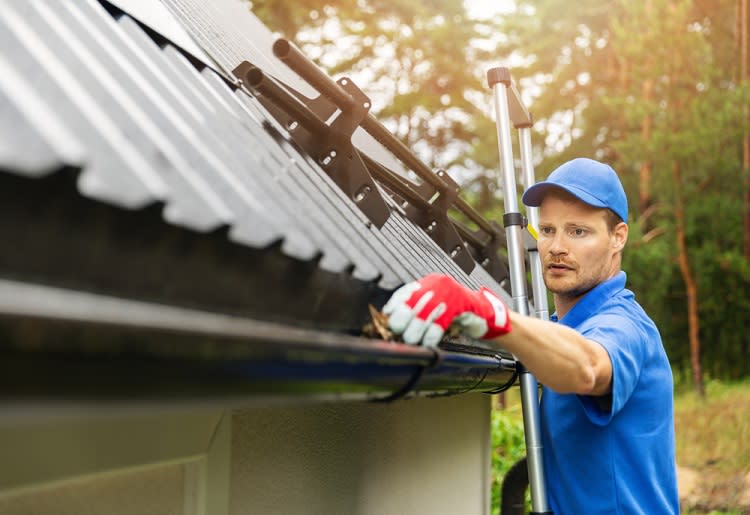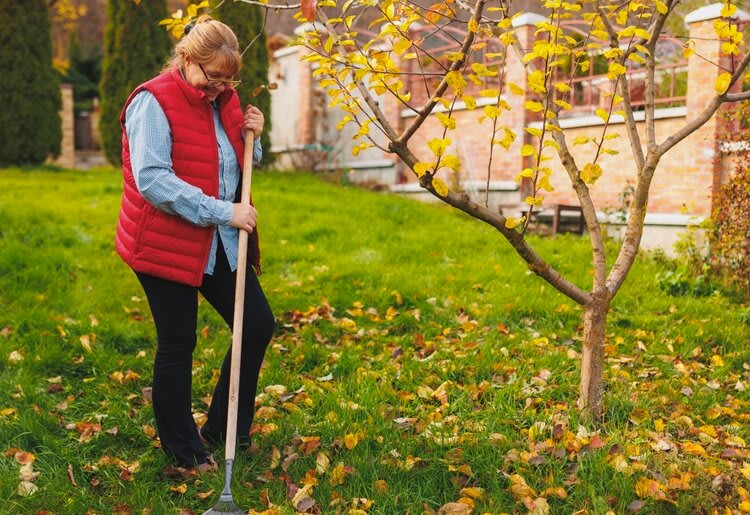We've compiled 10 maintenance tips to complete before the really cold weather sets in to help prevent any costly repairs down the road. And even if it’s too little too late and you end up with costly repairs, a great home warranty can help cover the cost.
» Looking for a reliable home warranty this winter? Check out our top picks for the best home warranty companies.
1. Check Your Weather-Stripping
Most doors and windows have weather-stripping installed to keep out drafts and help maintain energy efficiency. However, this rubber or foam sealant can wear down over time, creating gaps for air to seep through.
Inspecting your weather-stripping and replacing it as necessary is a quick and easy way to reduce energy costs this winter.
2. Clean Your Gutters and Downspouts
Gutters can become clogged with leaves, sticks, and other debris. When water is unable to drain properly, it can lead to overflows that could damage your gutters or even the foundation of your home.
To avoid costly repairs, take some time now to clear out your gutters so they can do their job when the rainy or snowy weather hits. This is one of many important maintenance tips for homeowners.
» Follow these steps to get your heating system ready for winter.

3. Reverse Your Ceiling Fans
Ceiling fans are not just for summertime use. They can actually help circulate heat evenly throughout your home in winter too.
By reversing the direction of your ceiling fans, you will push warm air back down into your living space where it belongs. This simple switch could end up saving you money on your heating bill this winter, according to energy.gov.
4. Inspect Your Fireplace and Chimney
If you have a fireplace, now is the time to give it a once-over to ensure it’s safe for use this winter. First, check for any cracks in the brickwork or damage to the liner.
Next, make sure the damper is open and clear of any obstructions. And finally, have a professional come out and clean the chimney to remove any buildup of soot or creosote that could cause a fire.
» Use these gas furnace maintenance steps to prevent carbon monoxide poisoning.
5. Consider Upgrading Your Thermostat
If you don’t already have a programmable thermostat, now might be the time to invest in one—especially if you plan to go on vacation this winter.
Programmable thermostats let you set different temperatures for different times of day (or night) so you’re not unnecessarily heating an empty house. Many newer models can even be controlled remotely via smartphone or tablet, making it easy to stay comfortable all winter long without breaking the bank.

6. Inspect Exposed Pipes for Leaks and Cracks
Any plumbing located on exterior walls is at risk of freezing during periods of extremely cold weather, which can lead to expensive repairs if left unchecked. To avoid any unpleasant (and costly) surprises this winter, take some time now to inspect all exposed pipes for leaks or cracks.
If you find any damage, make sure to repair it immediately with pipe insulation or heat tape so that it doesn’t get worse as temperatures continue to drop, possibly leading to a burst pipe down the road. And if a pipe does burst, many home warranties for homeowners companies will expedite your claim so you can get it fixed faster.
» Check out our handy guide on how to prevent frozen pipes.
7. Drain Outdoor Faucets and Water Lines
Along with protecting exposed pipes from freezing temperatures, another way to help prevent them from bursting is by draining all outdoor faucets and water lines before the freezing weather sets in.
This simple step will help ensure that no water is left sitting in these pipes that could freeze solid and cause major damage. Plus, it will save you having to thaw them out come springtime!
8. Add Insulation
In addition to protecting your exposed pipes, adding extra insulation around your home—both inside and out—is another great way to help keep your energy costs low this winter, according to energy.gov.
Drafty windows? Install caulk or weather-stripping around them to seal those gaps and keep warm air from escaping outside. Feeling a little chilly in certain rooms? Fiberglass batts are an inexpensive way to add extra insulation in between wall studs, where it counts most.
» Want to lower your heating costs this winter? Use these hacks.
9. Winterize Your Lawn Mower
Unless you live in an area with year-round warm weather, chances are you won’t be using your lawn mower much (if at all) once winter rolls around. To prevent it from sitting idle and deteriorating over the next few months, take some time now to give it a little TLC, so it’s ready to go when springtime rolls around again.
This may involve things like changing the oil, sharpening the blades, and adding a fuel stabilizer to the gas tank to help it run more smoothly come spring.
» Did you know you can use WD-40 to keep your lawn equipment in good condition? It’s one of several WD-40 uses in the home.
10. Bring in Any Outdoor Furniture or Decor
Last but not least, don’t forget to bring in any outdoor furniture or decor that you won’t be using this winter. Things like patio furniture, potted plants, and lawn decorations are all susceptible to damage from the cold weather, so it’s best to store them until the warmer months return. Not only will this help prolong their lifespan, but it will also give you a head start on your spring cleaning!
If you have any delicate plants that are susceptible to frost damage, now is the time to take measures to protect them from the cold weather. The simplest way to do this is to bring them inside, whether that means moving them into a sunny spot near a window or transferring them to pots so they can come indoors for the winter.
If bringing them all inside isn’t feasible, you can also try creating a makeshift greenhouse out of PVC pipe and plastic sheeting to help extend their growing season.

Winterize Now So You Can Relax Later
Follow these tips, and you will be prepared when bad weather hits! You will save money on energy costs while avoiding costly repairs that could pop up if ignored until it's too late.
Now is also a good time to check your home warranty to see what coverage you have for repairs that may come up over the winter months. In many cases, things like burst pipes and faulty HVAC systems are covered under these policies, giving you one less thing to worry about if something goes wrong!
» Don't have a home warranty? Check out our honest reviews for Liberty Home Guard and Choice Home Warranty.
